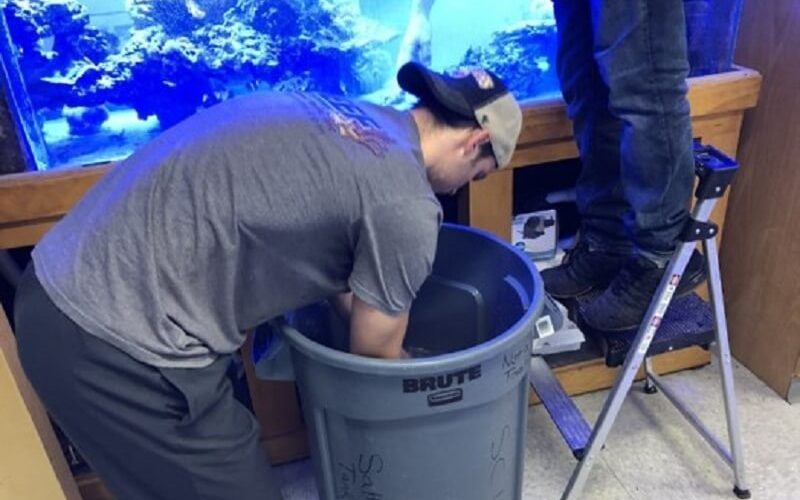The aquarium system most students see first, often on their campus tour, is the “display tank” in the first floor hallway of the Science Building (Rm 110). This 300-gallon sustainable reef tank houses three dozen species of hard coral, another dozen soft corals, gorgonians, anemones, reef fish, invertebrates, and even some algae. The tank has been growing for eight years and is now a thriving ecosystem that shows the beauty and intricacies of a natural reef community. The tank is used to demonstrate invertebrate diversity in many courses, but its other value is as a place for students to relax, reflect, and check in with Nemo (our clownfish) and Bubbles (our yellow tang) among others. The display tank also includes corals that are our mother colonies that we periodically “prune” to grow fragments for our other tanks.
Our main experimental system is a 400 gallon system of 10 reef tanks in the Aquarium Lab (Science Rm 113). These tanks serve a variety of purposes including student research projects, raising coral “frags,” and giving our students a chance to explore a particular theme. For example, one current tank is an anemone tank, set up and maintained by Carly Lech ’23. Another is a Caribbean ecotope featuring only Atlantic reef organisms. Our newest tank is the Cardinalfish tank, featuring our school mascot (see below).
Reef Inhabitants
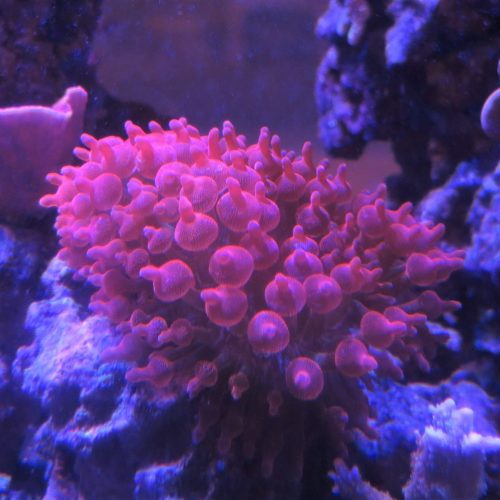
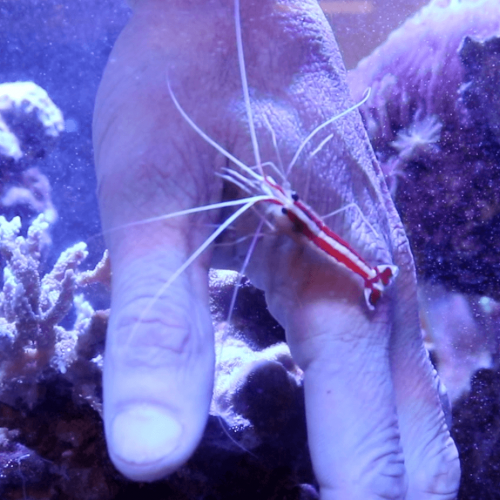
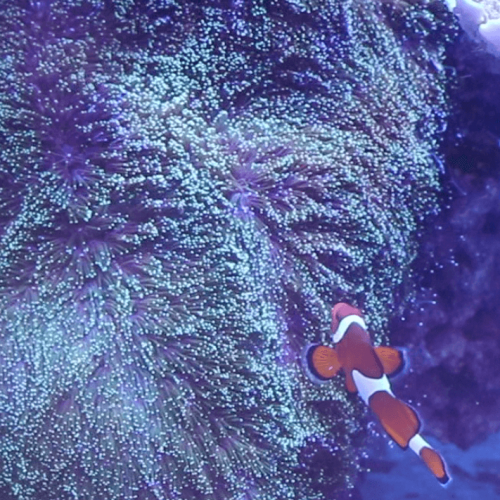
Our Labs Are Our Classroom
The aquarium lab is an important part of the aquarium courses. For example, students in “Bio 3340: Coral Reef Ecology,” performed semester-long experiments investigating coral growth rates. They produced over 200 of their own coral specimens by fragmenting mother colonies and attaching the pieces to plugs which they then grew under a variety of conditions: high and low food, variable wavelengths of light (blue and purple vs red and white), and high, medium, and low turbulence. Over the course of the semester, students found that the corals grew best under low turbulence, blue light, and that extra food increased the growth of one coral species, but not the other two in the experiment.
In addition, another student group tested the competitive abilities of various species. They built racks that put corals in contact with each other and observed as some species out-competed others. The most dominant coral was Hydnophora, which killed every coral it came in contact with. Several species of corals with small polyps showed no signs of aggression and lived together without loss of growth.
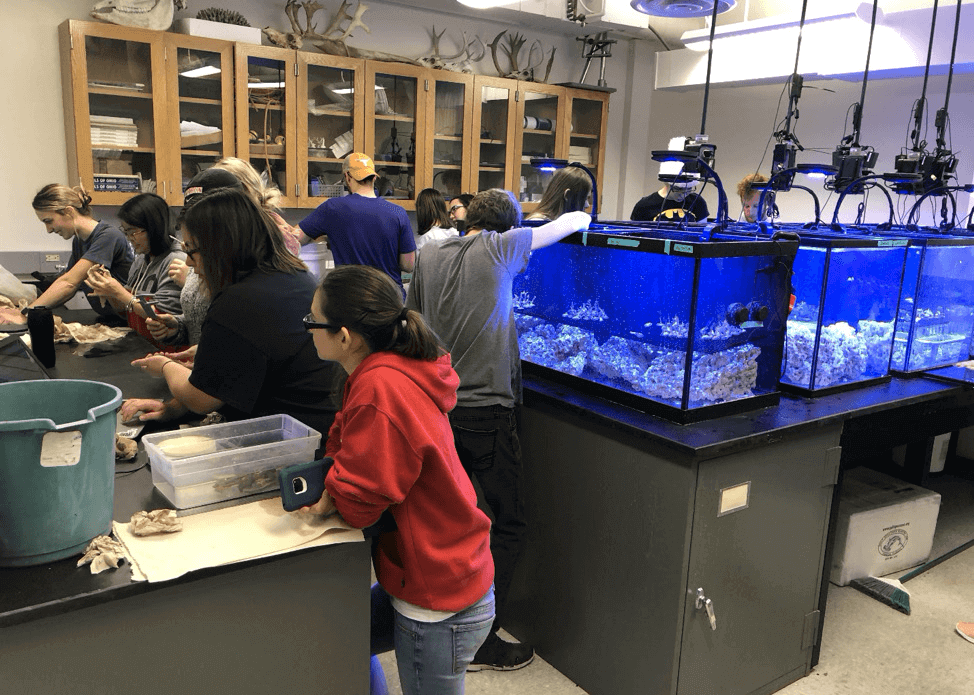
Coral Growth Experiments
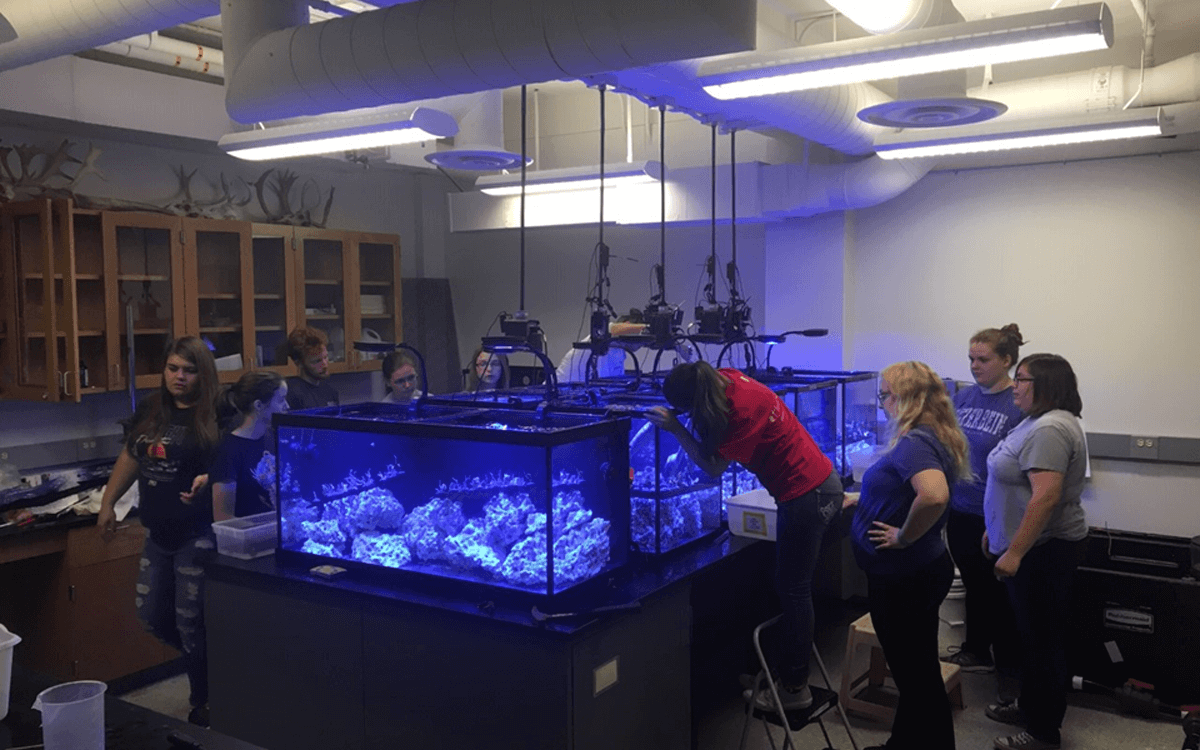
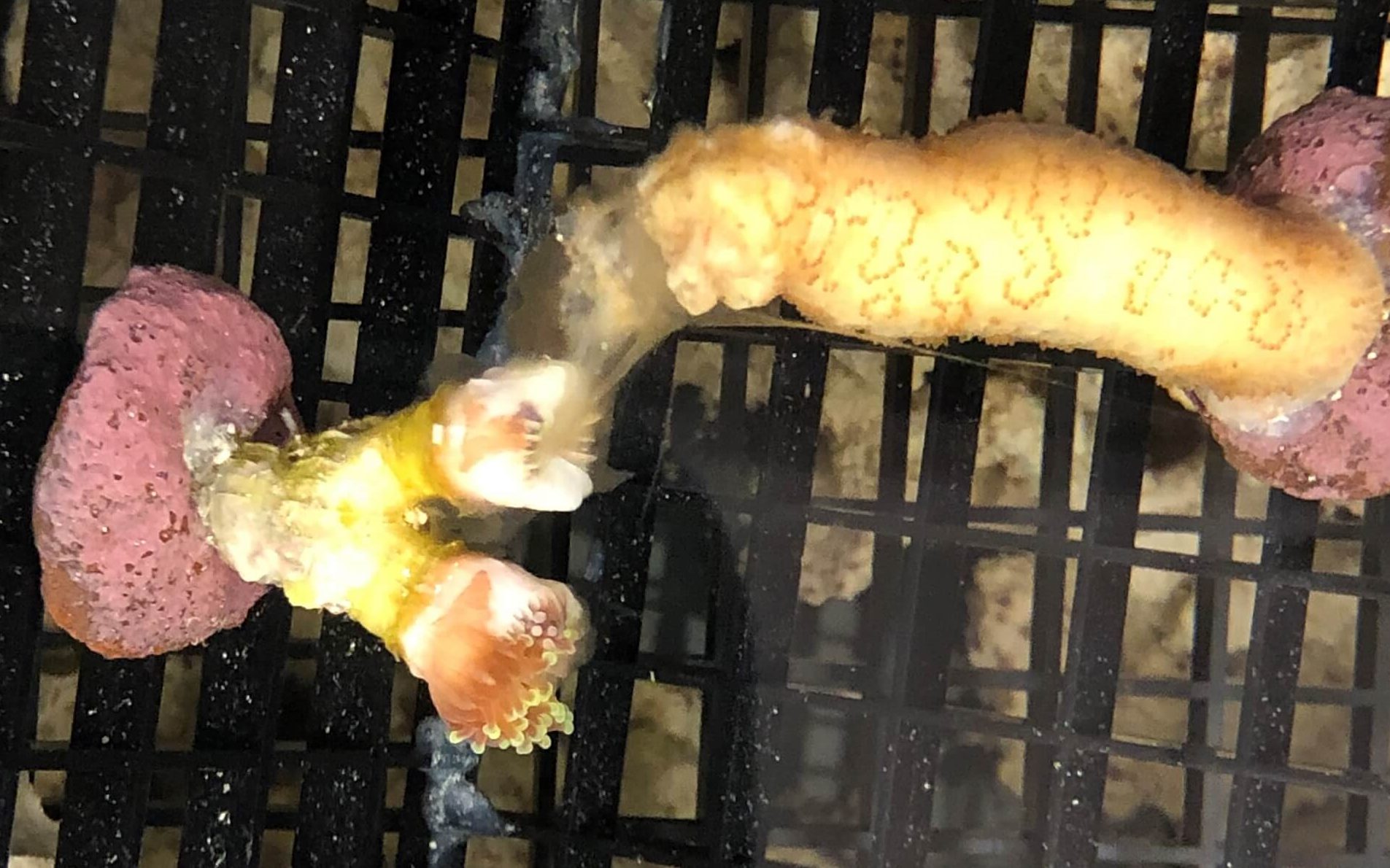
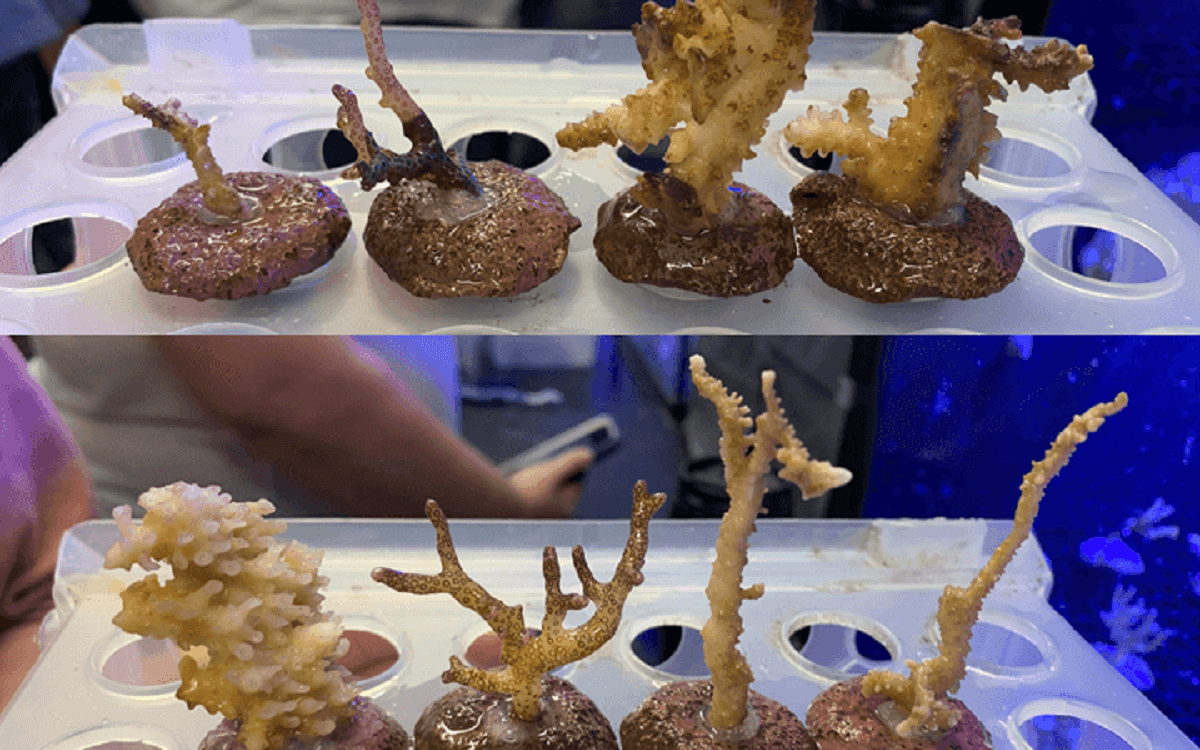
Otterbein’s Cardinalfish Tank
Otterbein’s mascot is the Cardinal, and so the Aquarium Program has taken the cardinalfish as its unofficial mascot. One new project is a cardinalfish tank in the aquarium lab window that is visible from the hallway. Cardinalfish (Family Apagonidae) are probably the most abundant fish on reefs, though they are rarely seen since they are small and nocturnal. One exception is the Banggai cardinalfish that is active during the day, and just might be remembered by avid “Finding Nemo” fans as the fish that opens its mouth so the kids can swim out and board the Mr. Ray school bus. Cardinalfish are mouth brooders, meaning that the male tends the babies in its mouth, and tight connections form between families and members within cardinalfish schools. One study took cardinalfish and dropped them overboard 5 km from their home reefs, and, yes, some of the fish, which are less than 10 cm long, still found their way home, even if it took 10 days of swimming through unknown waters. At human scales that would be 95 miles! I guess it turns out that Cardinalfish are not unlike Otterbein students. They are exceedingly loyal and always find the way to their goal.
Note: when viewing them in the tank don’t shine bright lights. During the day, we keep the tank in “night mode” with only red light. During the night, the bright lights come on, and the cardinalfish hide in the rocks.
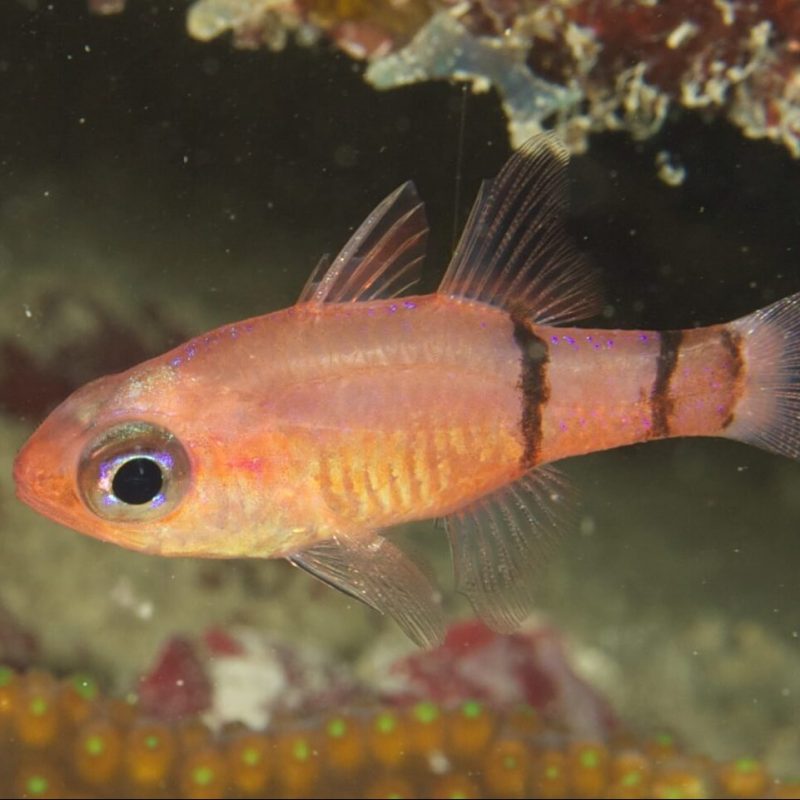
Typical Caribbean Cardinalfish (Apogon Townsendi)
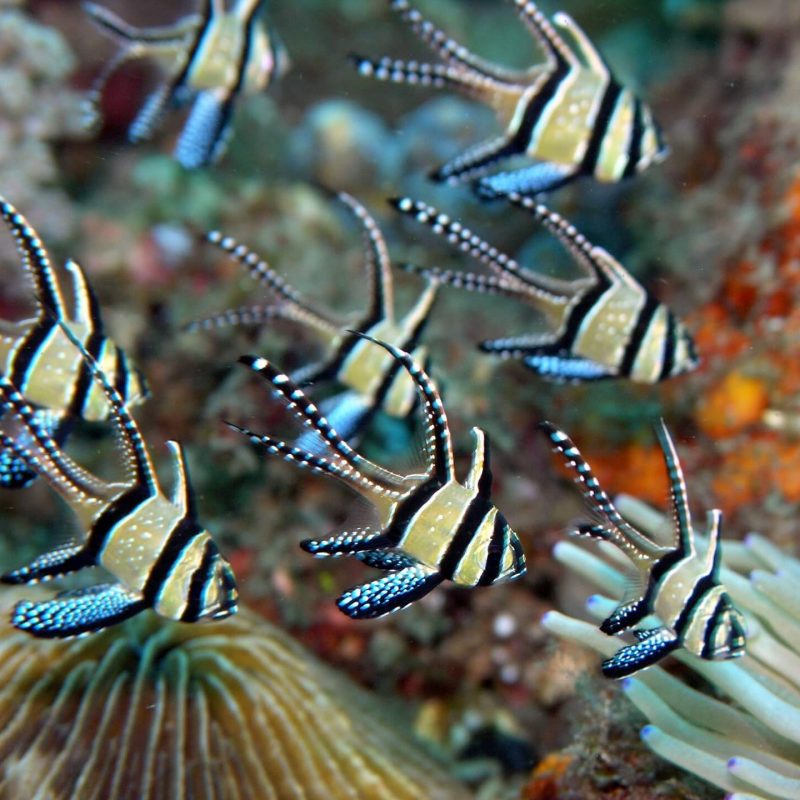
Banggai Cardinalfish, the only diurnal cardinalfish. Two students are trying to breed these in our lab.
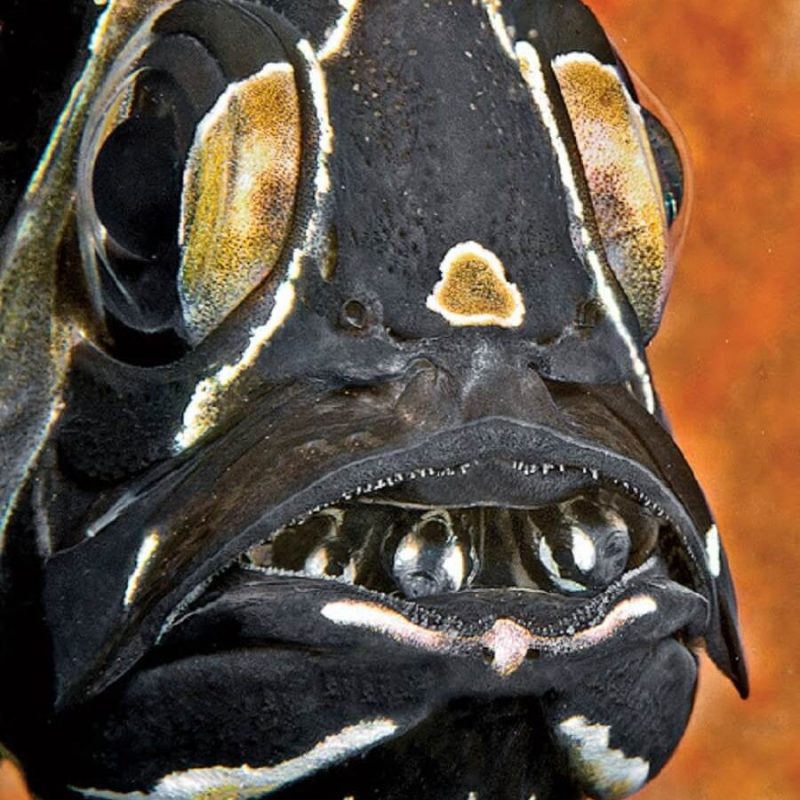
Note how Banggai Cardinalfish males brood their babies in their mouth.
How We Keep the Tanks Running
Saltwater reef tanks must be kept within a narrow range of water quality and physical parameters. Temperature, light, and circulation are computerized and app-accessible so that we can change settings in each tank. We use an Apex Fusion system for dosing and Aquatic Illumination and Ecosmart wave makers and lights.
In order for hard corals to grow, the water chemistry has to be just right. We buy salt from “Instant Ocean,” and mix it up in 200-gallon poly tanks. Once the water has the right salinity, we can pump it into the system when needed. Because the system has on-going evaporation, we continually add small amounts of fresh water. New salt water is needed periodically for water changes. Corals and fish continually secrete waste into the seawater but most of this is broken down by bacteria living on the “live rock” in the tanks and in the sump. In addition, we have a protein skimmer where air bubbled through the water picks up protein and deposits it in a chamber, out of the water, where it can be periodically disposed of. However, waste levels slowly rise and each month we replace about 20% of the water in each system with new freshly mixed seawater.
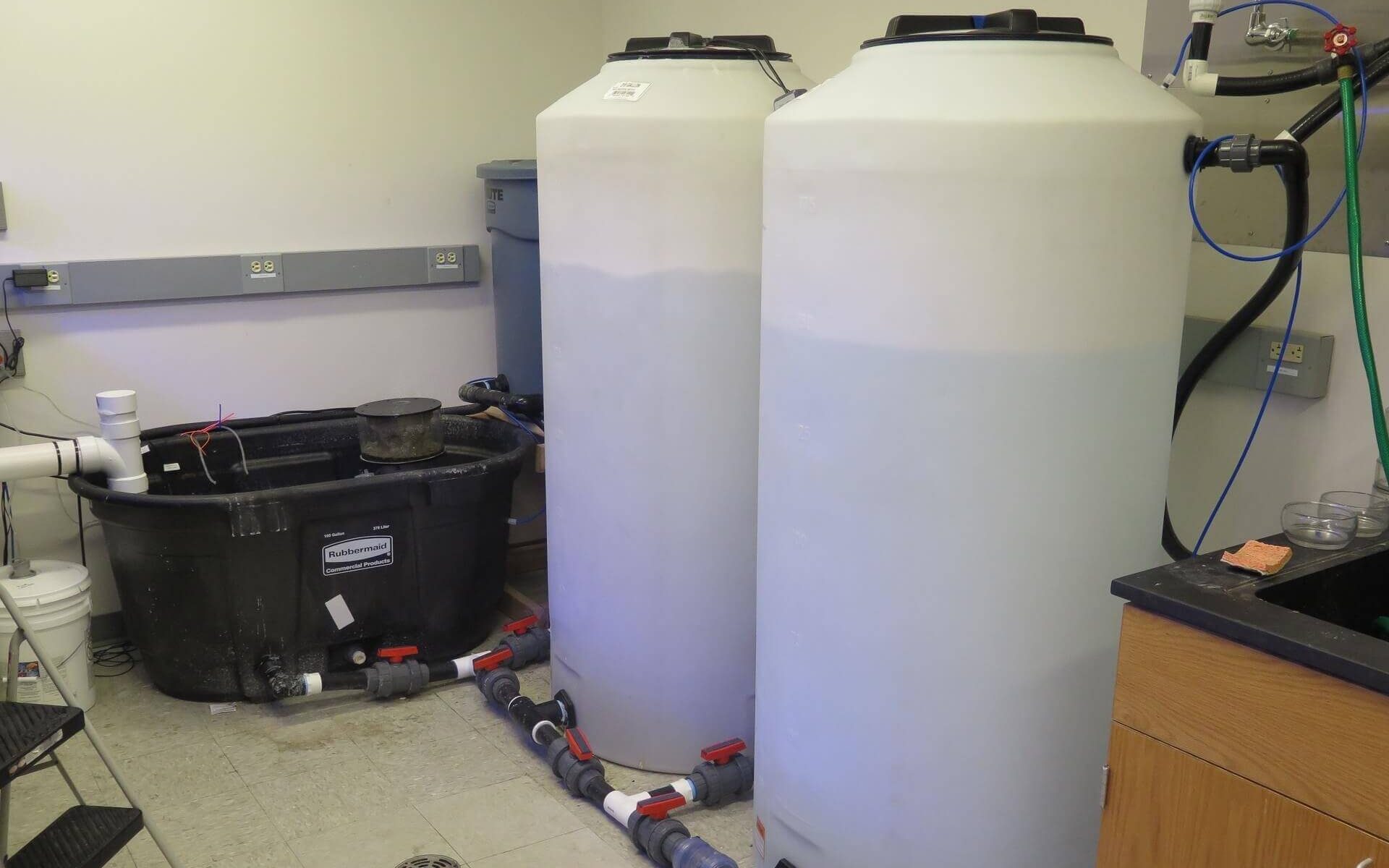 Poly tanks for deionized water (R) and mixing salt water (L).
Poly tanks for deionized water (R) and mixing salt water (L).
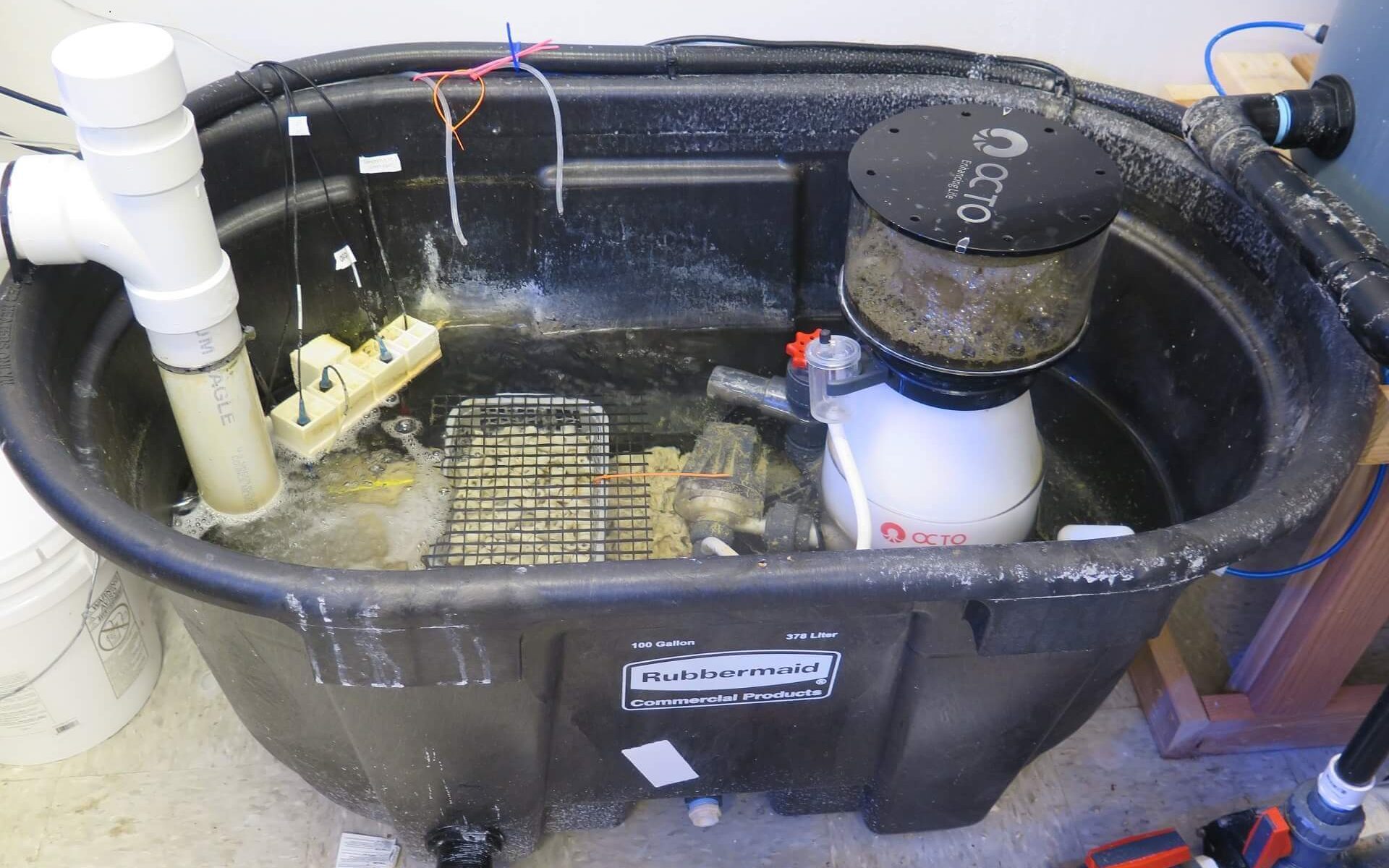 The sump containing the protein skimmer (R) and small tubes entering (L) for adding calcium and alkalinity.
The sump containing the protein skimmer (R) and small tubes entering (L) for adding calcium and alkalinity.
Corals grow by laying down calcium skeletons and to do so they need to continually pull Ca++ and Alkalinity from the seawater. We need to replace those constituents in very precise amounts which we do using a computerized doser to regularly pump small amounts of liquid Ca++ and Alkalinity solutions into the tank.
The final and most important part of keeping the tanks running is the clean up crew. The cleanup crew is made up of snails that feed on algae keeping it under control, and small crabs that process algae and other detritus. But the biggest part of the cleaner uppers is the Aquarium Crew: the students that scrape algae from the glass and suction detritus from the bottom. The glass sides of the display tank are cleaned twice a week in order to remain clear for viewers. Let Dr. Lescinsky know if you would like to be part of the Aquarium Crew.
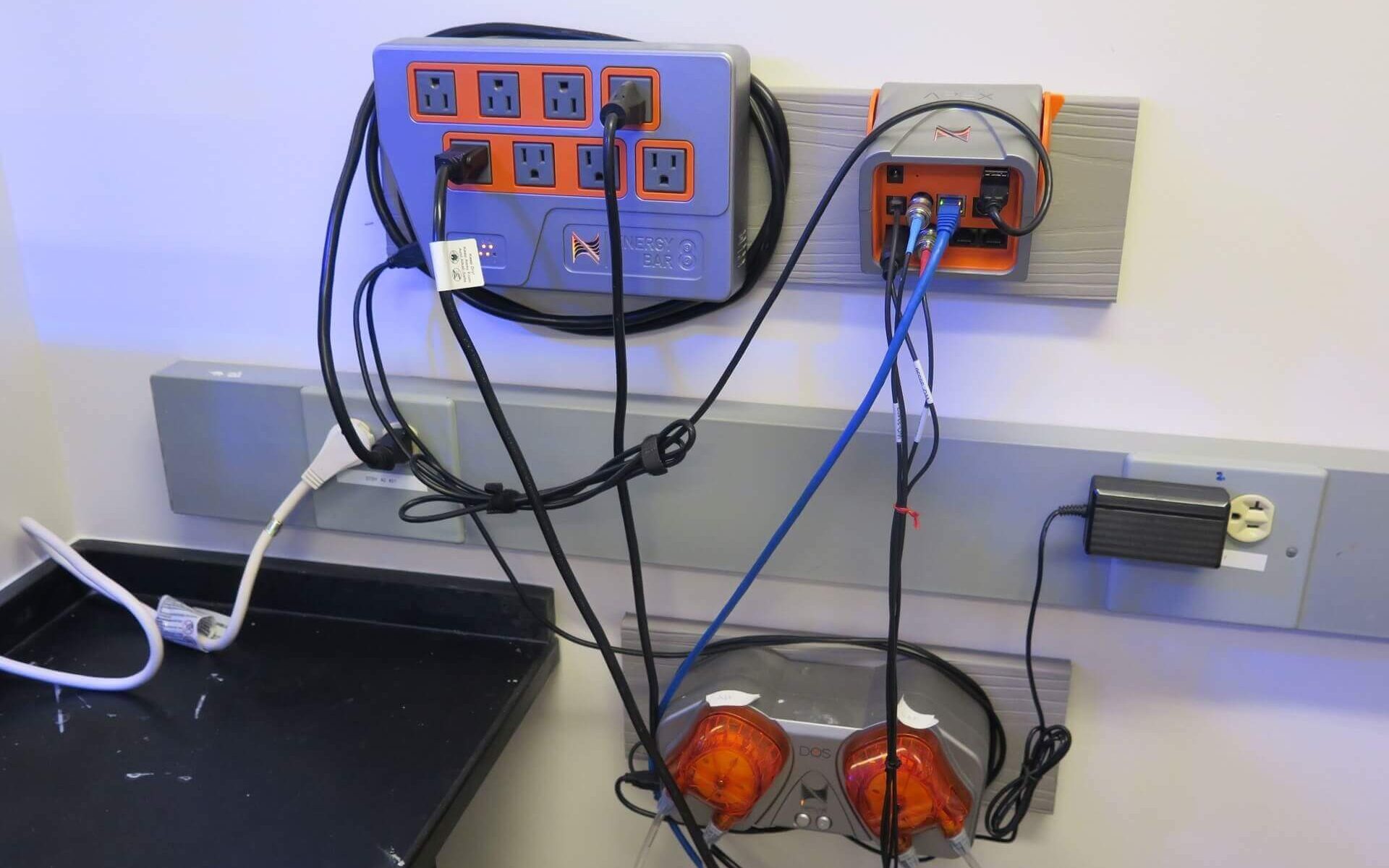 Computerized Apex Dosers add Calcium and Alkalinity in specific amounts.
Computerized Apex Dosers add Calcium and Alkalinity in specific amounts.
